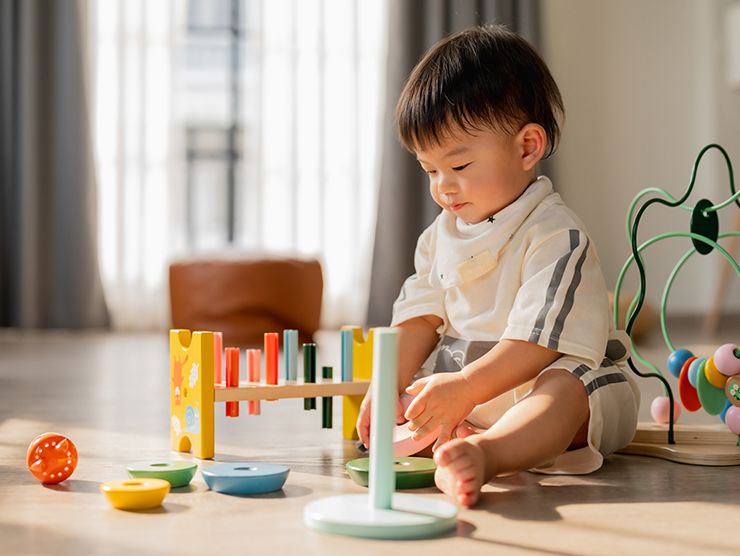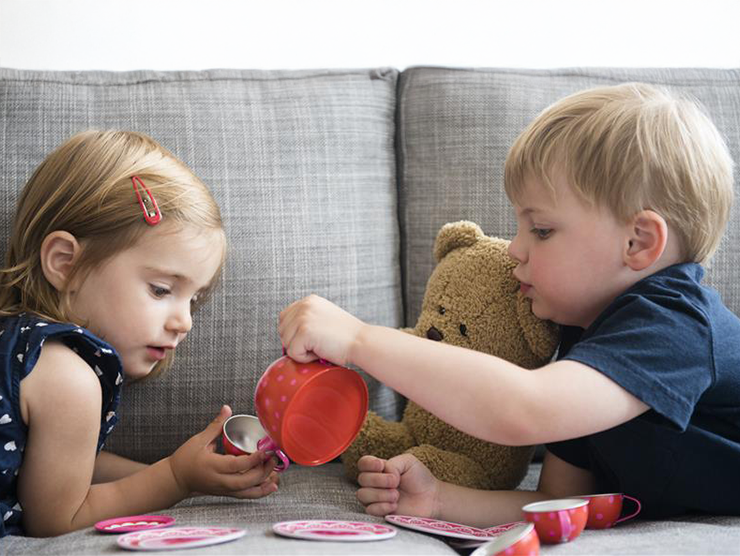From a young age, infants and toddlers love looking at faces. Babies are naturally interested in the smile of a teacher, the facial expression of a parent, or the cry of another infant. Babies and toddlers especially love looking in mirrors, which is a simple exploration that doesn’t plug in or come with lights and sounds. Mirror play enhances skill development in multiple areas including:
- Self-Awareness. By providing opportunities for them to explore their own bodies, facial expressions, and emotions, infants and toddlers begin to understand that the image they see in the mirror is them (usually around 18-24 months). One clue that a toddler is beginning to gain self-awareness is by putting rouge or lipstick on your child’s forehead (called the “rouge test”) and observing if, when looking in a mirror, your child tries to wipe it off their own head or the head of their “friend” in the mirror. Once they realize they are looking at their reflection you know that mirror play has helped develop self-recognition.
- Object Permanence. Infants are learning that things still exist even when they are not within direct sight. When infants and toddlers look in the mirror, they recognize that this is their own face.
- Spatial Awareness. As infants and toddlers explore their reflections, they may reach, grasp, or move their bodies in various ways, creating new angles to observe. This movement begins to relate to what they are seeing and move their bodies accordingly.
- Fine and Gross Motor Skills. Exploring their reflections in the mirror naturally encourages children to reach, point, or grasp what they are seeing. Infants and toddlers may be encouraged to roll, crawl, or move their bodies in different ways while watching their reflection.
- Language. Time together with your child in front of the mirror provides a great opportunity to provide names for body parts and emotions and describe what you are seeing. All of this conversation enhances your child’s growing vocabulary.
Here are a few mirror play ideas to try with your baby or toddler.
- Set a mirror in front of your baby during tummy time. Tummy time in front of mirrors encourages gross motor development, observation, and development of self-awareness.
- Hold your baby and look in a mirror together. Point out facial features. “Look, here are your eyes. Here are Mommy’s eyes.” Make silly facial expressions and label them for your child, e.g., “I’m smiling. I’m happy.” These experiences build your child’s social-emotional development and emotional literacy.
- Explore other reflective materials with your child such as a window or metal bowl.





